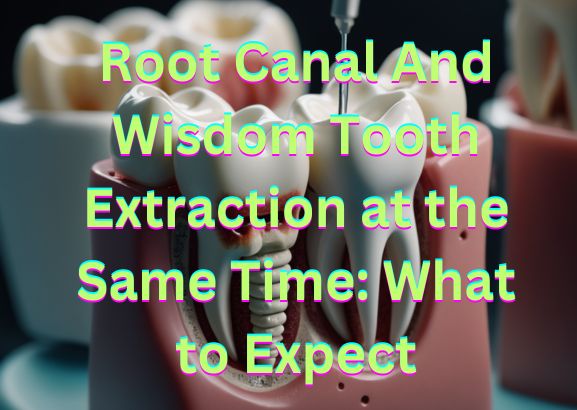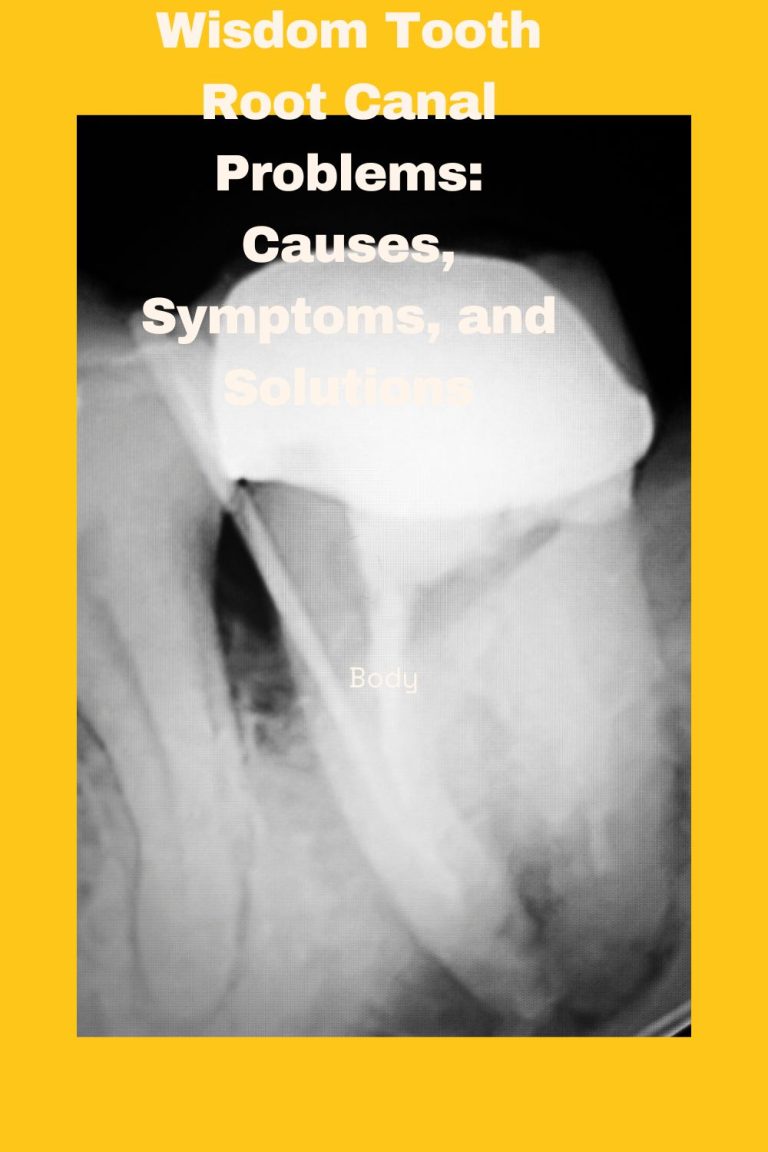Can You Spot a Failed Root Canal on an X Ray? Know the Signs!
Last Updated on 6 months by DR. ALBIN SIPES
A failed root canal can be detected on an x-ray, showing signs of infection or a poorly filled canal. Now, i will discuss in detail how an x-ray can reveal the failure of a root canal procedure.
Root canals are a common dental procedure used to save a tooth that has become infected or decayed. During the procedure, the tooth’s pulp and nerve are removed, and the canal is cleaned and sealed. However, sometimes a root canal can fail, leading to persistent or recurring pain, infection, or other dental issues.
When a root canal fails, it can often be detected on an x-ray. An x-ray image can show signs of infection, such as bone loss or widening of the periodontal ligament. It may also reveal a poorly filled canal, indicating that the original procedure was not successful in removing all infected tissue or properly sealing the canal. An x-ray can be a valuable tool in identifying a failed root canal by detecting signs of infection or inadequate treatment. It allows dentists to evaluate the success of the procedure and make informed decisions on the appropriate course of action.
What Is A Root Canal Procedure?
A root canal procedure involves the removal of infected or damaged tooth pulp. It is done to save the tooth from extraction. The dentist first numbs the area around the tooth. Then, they create an opening to access the infected pulp.
The pulp is removed, and the tooth is thoroughly cleaned and disinfected. Afterward, the hollow space is filled with a material called gutta-percha. This seals the tooth and prevents further infection. A dental crown is often placed on top of the tooth to provide protection and restore its functionality.
Root canals are typically done when a tooth has extensive decay, abscess, or trauma. The purpose of a root canal is to alleviate pain, remove infection, and restore oral health. When done properly, a failed root canal can be detected on an x-ray, showing signs of reinfection or incomplete treatment.
Reasons For A Failed Root Canal
Reasons for a failed root canal: incomplete removal of infected tissue is one factor that can lead to failure. Missed canals during the procedure can also contribute to a root canal’s failure. Another reason is inadequate disinfection of the canals.
Poorly placed or leaking filling material can compromise the success of the root canal treatment. Additionally, delayed restoration or crown placement can negatively impact the outcome of a root canal. To avoid these issues, it is important to ensure thorough removal of infected tissue, locate and treat all canals, properly disinfect the canals, use high-quality filling material, and promptly restore the tooth.
By addressing these factors, the chances of a successful root canal can be significantly improved.
Understanding X Rays In Root Canal Treatment
X-rays play a vital role in root canal treatment. They help diagnose and assess the success of the procedure. Different types of x-rays, such as periapical and panoramic x-rays, are used during the treatment. These x-rays provide detailed images of the teeth, surrounding bone, and root canals.
By examining these images, dentists can identify any missed canals, infections, or other complications. X-rays also help dentists determine the ideal length and size of the root canal filling. Furthermore, they assist in evaluating the placement of dental instruments and materials.
With the help of x-rays, dentists can ensure that the root canal procedure is properly executed, reducing the chances of a failed root canal. So, next time you’re scheduled for a root canal, remember the significance of x-rays in ensuring successful treatment.
Radiographic Signs Of A Failed Root Canal
Radiographic signs play a crucial role in identifying a failed root canal on an x-ray. One common indication is the presence of periapical radiolucency and bone loss surrounding the tooth. Another evident sign is the existence of an apical radiolucency indicating a failed root canal.
In addition, a failing or fractured restoration can also be observed on the x-ray, suggesting a potential problem with the root canal. Moreover, the detection of a periapical abscess is a strong indication of a failed root canal treatment. These radiographic signs should be carefully examined by a dental professional to determine the success or failure of a root canal treatment.
Comparing Before And After X Rays
Comparing pre and post-operative x rays is crucial for assessing the success of a root canal. By evaluating the changes in the x-ray images, we can identify any technical errors during the procedure. These x-ray comparisons allow us to monitor the progress or failure of the treatment over time.
It is essential to carefully analyze the x-ray images to detect any signs of a failed root canal. This evaluation helps us determine the next steps in addressing the issue and ensuring the best possible outcome for the patient. Trusting the x-ray images, we can make informed decisions to deliver effective and successful root canal treatments.
Seeking Professional Help
Seeking professional help is crucial when it comes to interpreting x-rays of failed root canals. Consulting a dentist is of utmost importance for an accurate evaluation. Differentiating between normal healing and failure plays a significant role in determining the best course of action.
Advanced imaging techniques are employed to assess the condition. In the event of a failed root canal, various treatment options are available to restore dental health. It is important not to delay seeking the expertise and guidance of a dentist to address any issues that may arise.
Professional interpretation of x-rays can provide valuable insights, enabling appropriate decisions to be made for the best possible outcome. So, make sure to consult a dentist for proper evaluation and treatment if you suspect a failed root canal.
Prevention And Maintenance For A Successful Root Canal
Proper diagnosis and treatment planning are crucial for a successful root canal. It is important to choose an experienced endodontist who specializes in these procedures. Regular dental check-ups and x rays help to identify any potential issues early on. Good oral hygiene practices, such as brushing and flossing regularly, are essential for long-term success.
By following these guidelines, you can prevent complications and maintain the health of your root canal. Trusting a reputable professional and staying proactive with your dental care will ensure a positive outcome.
Frequently Asked Questions On Can You See A Failed Root Canal On X Ray
Can A Failed Root Canal Be Seen On An X-Ray?
Yes, a failed root canal can be seen on an x-ray. The x-ray may show signs such as a dark area around the tooth, an infection present at the root tip, or a broken root canal instrument. However, some failed root canals may not be visible on an x-ray and further evaluation may be needed.
What Are The Signs Of A Failed Root Canal?
Signs of a failed root canal may include pain or discomfort in the treated tooth, swelling or tenderness around the gum area, recurring infection or abscess, or a loose or cracked tooth. These symptoms may indicate that the root canal treatment was not successful and further evaluation by a dentist is necessary.
What Should I Do If I Suspect A Failed Root Canal?
If you suspect a failed root canal, it is important to schedule an appointment with your dentist as soon as possible. They will perform a thorough examination and may recommend additional tests, such as an x-ray or a root canal retreatment, to determine the cause of the problem.
Early intervention can prevent further complications and preserve your oral health.
Conclusion
A failed root canal can indeed be visible on an x-ray. The importance of regular check-ups and x-rays cannot be overstated, as they can help identify any complications with prior dental procedures. X-rays can reveal signs such as infection, abscesses, or improperly filled canals.
If you experience persistent pain or discomfort following a root canal, it is crucial to consult with your dentist for further evaluation. Ignoring the signs and symptoms can lead to worsening oral health issues and potential tooth loss. Remember, early detection is key in preventing further damage and ensuring successful treatment.
Don’t hesitate to seek professional advice if you suspect a failed root canal. Your dentist can provide appropriate recommendations for addressing the issue and preserving your dental well-being. Keep yourself informed and take necessary steps to maintain a healthy, pain-free smile.



